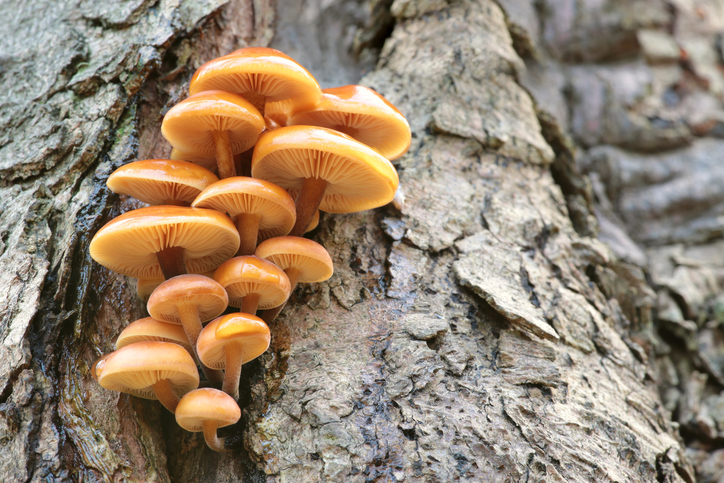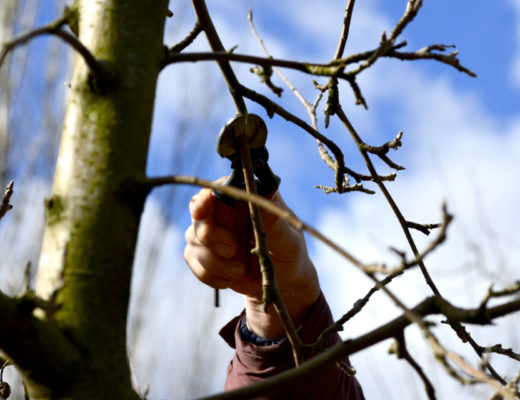Guest post by John Lang of Friendly Tree.
Trees bring so much benefit and beauty to the landscape, it can be hard to part with them. But, while a tree may seem healthy to the untrained eye, it could be a disaster waiting to happen.
Tree removal is usually a last resort, when no other safe management option, like pruning or disease mitigation, is sufficient. Dead, dying or otherwise hazardous trees can lead to thousands of dollars in damage, plus the priceless cost of personal injury. Often a tree doesn’t look dangerous until after a storm or heavy snow exposes its vulnerabilities.
Nebraska: The Latest State to Identify EAB
As a tree owner, you are responsible for damage or injury that occurs because a tree that should have been removed was left standing. The good news is, you can often tell if a tree is struggling by studying its branches, trunk, roots and location.
Here are some red flags to look for which indicate your tree should be inspected by a professional and possibly be removed.
It’s Time to Call an Arborist if…
There are signs of infection. Crown dieback, cracks (deep splits in the tree’s bark), misshapen or discolored leaves, soft crumbly wood, and the appearance of fungi may indicate your tree is infected. Other signs that may show the tree has unwanted pests include emergence holes, feeding galleries and woodpeckers feeding heavily on the tree.
You see large, dead branches in the tree’s crown. These are sometimes referred to as widow-makers because they can fall for seemingly no reason and seriously injure those below. If 50 percent or more of the tree is dead or damaged, it should probably be removed for safety reasons.
Ask an Arborist: How do I Hire an Arborist?
Your tree isn’t growing well. Take a look at the health and vigor of your tree compared to the trees growing near it. Thin leaf cover, discolored foliage and stunted growth are all signs your tree is having trouble. The reason may need to be diagnosed by a professional.
There is evidence of root defects. Root defects often are not easily noticeable, but heaving soil and fungi growing near the tree’s base are both signs of root issues.

Family of mushrooms on a tree trunk.
The trunk is compromised. Cracks or splits, large wounds and dead branch stubs on the tree’s trunk all indicate internal decay. Many people don’t realize trees can actually live for years with internal decay. Some trees can handle internal decay and remain standing for a while, but it’s just a matter of time before they eventually do fall. Trees with multiple trunks (also called “leaders”) can also end up with structural issues later on down the road.
The tree is hollow. A tree with a hollow trunk has been seriously compromised and is a hazard. If a third of the tree is rotted or hollow inside, it needs to be removed.
The tree is suddenly leaning. All leaning trees aren’t necessarily dangerous, but a tree that suddenly leans to one side may have structural problems.
You observe sprouts at the base of the tree. These are known as epicormic shoots and they indicate that the tree is severely stressed and should be evaluated by a professional.
The tree is under power lines. A tree that is growing into power lines can become a hazard and may need to be removed by a certified arborist or tree service.
The tree is too close to a house or other structure. Trees hanging over the roof or too close to a structure might need to be removed – or at least regularly pruned. In general, large trees should be at least 20 feet away from a house or building.

The Right Tree for the Right Place
Dead or dying trees don’t always need to be removed, if they are located in a forested area or away from people and structures. These trees can serve as a home and refuge for woodpeckers and other wildlife.
While some tree failures are sudden and unpredictable, it’s good to know most can be prevented by proactive measures. Now is a good time to inspect trees, before the worst of summer’s storms and heavy winter snowfall. If you notice any of the above signs, contact a professional, as most tree removal jobs are unsafe for the average home or property owner.
About the Author
John Lang is a Certified Arborist and a member of the Friendly Tree team, a family-owned New Jersey tree care service, dedicated to the thoughtful and careful maintenance of your trees and shrubs. Friendly Tree Service has been in business for 26 years and remains passionate about trees and nature. With a highly trained staff that treats every property as their own and state of the art equipment, Friendly Tree is on the cutting edge of the art and science of Arboriculture.





It’s always best to err on the side of caution Ivanna. Visit https://www.treesaregood.org/findanarborist to find a local arborist who can diagnose your tree and help you remove it.
An arborist can help diagnose your tree’s issue and offer some care tips. Good catch on your end.
Always err on the side of caution and have an arborist check it out. You can find one here https://www.treesaregood.org/findanarborist/findanarborist
Hi Taylor,
Check out our Ask an Arborist: How do I Hire an Arborist? post. We review tips for finding an arborist and many of those same tips can transition to tree services, such as making sure they are insured and certified. https://arbordayblog.org/askanarborist/ask-arborist-hire-arborist/
Best of luck.
This is why the Right Tree in the Right Place is so important. It’s not safe to plant large trees under power lines.
Hi Tatiana,
Safety should always be a priority. There are however small trees that are okay to grow under power lines, so long as they do not grow to high. It’s worth having an arborist come and check it out, but the tree may be safe to keep as long as it is pruned and less than 25-30 ft at maturity. Best of luck.
It doesn’t hurt to have it examined by a certified arborist, especially if the hanging limbs post as a safety threat.
Hi Taylor,
We encourage you to have trees removed by certified arborists. As they can assess the best way to safely remove a tree. This site is good for finding local arborists: https://www.treesaregood.org/findanarborist.
You might also watch Ask an Arborist: How do I Hire an Arborist? for other tips on hiring professionals. https://arbordayblog.org/askanarborist/ask-arborist-hire-arborist/
Thanks for explaining how a crack or dead branch stubs on a tree trunk are signs of internal decay. I have an old tree in my backyard, and I have noticed a few cracks on the trunk. The tree is also leaning, so I’ll find a professional tree removal service to help me get rid of this old tree.
This entire post absolutely ROCKS! Thank you for all the hard work you put into it. It really shows. I actually have some fans on a facebook page related to this stuff. I’ll share your post with them and see what they have to say. I’m sure they’ll love it though.
My husband and I noticed that the tree outside our house is really close to the power lines. As you mentioned, that is a sign of problems and needs to be fixed. I will contact tree removal services to help us with that problem.
This is probably the most “it actually makes sense” kind of post I’ve seen on on this subject. It really answered my question on when to cut trees outside of our house. Best part… I didn’t have to go digging through some weird web design to find it. Awesome! PLEASE keep posting new material!
I believe in the 80/20 rule. you know, where 80% of all reward comes from 20% of the effort? Well, I believe your blog is that 20%. I’ve added you to the list of sites that I frequent. Thank you for the in depth and detailed blog posts. Not many people are willing to do that anymore.
It never occurred to me that miscolored leaves could be a sign that a tree has an infection. If I saw leaves changing on a tree, I would immediately assume that it would be caused by the seasons changing. If a tree has suspiciously colored leaves, it would be important to have an arborist examine it.
This is a great read
It was really helpful when you said that a sign could be when your tree starts to suddenly lean. There has been a tree in the yard of my home for many years now and I just noticed how it started to lean a little bit and I was wondering if that was a bad sign. I’ll have to look into hiring someone to come in and remove it so my yard can be safer.
This is a great read to be able to know what to look for when you need to remove a tree.
It’s good to know that fungi near the base of the tree could imply the roots have issues. My wife and I have been concerned that a tree in our backyard might be sick, but we haven’t been sure. It’s tall enough that bad luck could have it knock a hole in our wall, so we definitely want to take care of it. We’ll probably hire an arborist to check it out like you said, and have the tree removed by professionals if necessary.
Really it is a great article and more helpful to get the best assistance for tree removal. I am very glad to go through this kind of helpful blog. Thanks for sharing a nice blog.
Hi ! I read your blog and it is very nice blog. I check many online tree removal companies for my yard but when I read your blog and I finally decide for which type of tree removal service is perfect for my yard.
I really appreciate that you shared this amazing post with us, thanks for sharing and keep up the amazing work.
It’s interesting to know that if the truck of your tree is compromised can be a sign of internal decay. My husband and I are thinking about how to identify signs of damage in the trees of our backyard, and we are looking for advice. I will let him know about your recommendations to choose the right tree care company to help us.
As you mentioned, if 50% or more of the tree has dead blanches, it is probably a good indication that it is time for the tree to go. We have a tree in the backyard that has more dead branches every year. Is there anything that can be done to reverse this? Or should we have the tree taken out so it doesn’t injure anyone?
I have two “weed trees” that the previous owner let grow in their stand of juniper bushes on an embankment. They are pin oaks and pretty now, but I can only see them causing problems later. They are only on the 20 ft range now (maybe shorter). It seems like a good idea to cut them before they grow too much on the back? Thoughts?